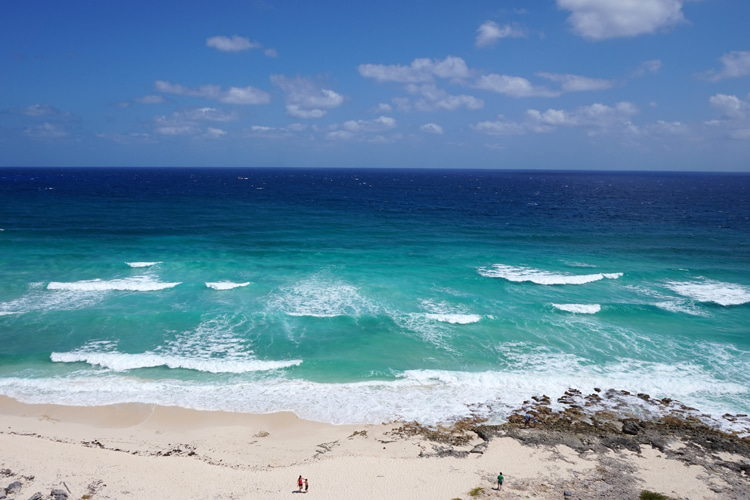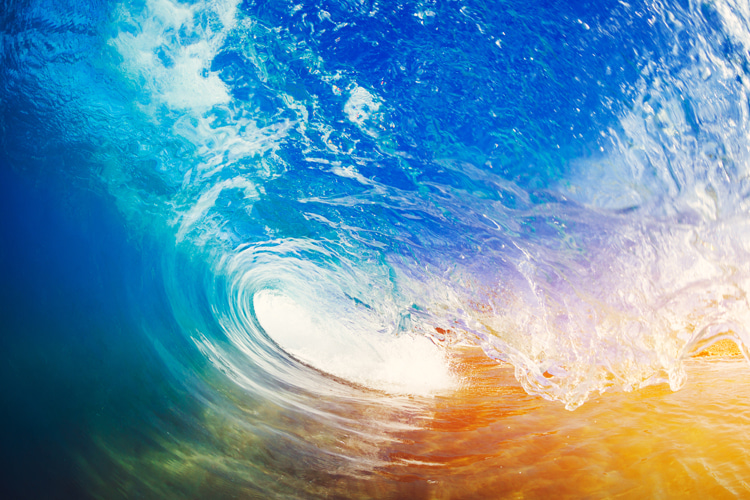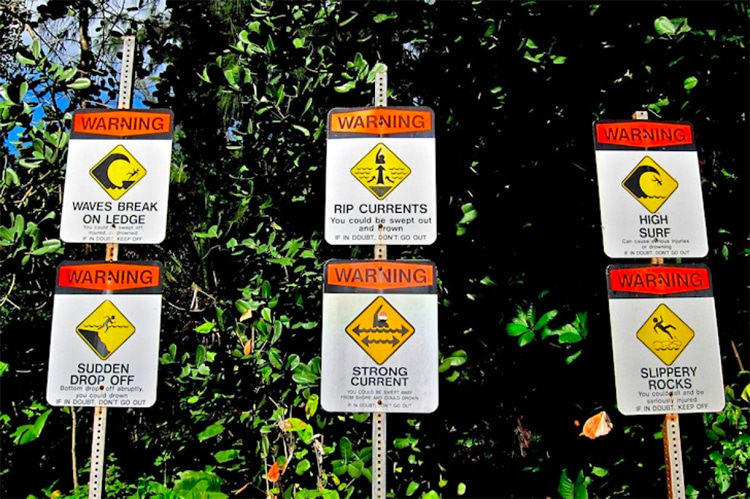There are three main dangerous ocean currents. Rip currents, undertows, and rip tides are very frequent in most beaches and coastal regions. Learn how to survive them.
Surfers know these currents very well - they've already been dragged by them or used channels in their favor.
However, can we evaluate distinct dangers and act accordingly? How do we get back to the beach, and when should we know something's not right?
The Eastern Long Island Coastal Conservation Alliance (ELICCA) has detailed the differences between these natural beach hazards.
Let's see.
What Is a Rip Current?

Rip currents are strong offshore flows and often occur when breaking waves push water up the beach face.
This piled-up water must escape back out to the sea as water seeks its own level.
Typically, the return flow (backwash) is relatively uniform along the beach, so rip currents aren't present.
A rip current can form if there's an area where the water can flow back out to the ocean easily - for instance, a break in the sand bar.
Rip currents are generally only tens of feet in width, but there may be several at a given time spaced widely along the shore.
Rip currents are often detected in about knee-to-waist high water.
They can be difficult to escape by walking back toward shore against the current once you are in chest-deep water.
These strong, offshore-directed currents pull the water or someone at all water depths through the surf zone.
The current only dissipates offshore of the breaking waves where the water can be quite deep - certainly over your head.
Moderate waves (two to three feet) on sunny days are very appealing to swimmers but can sometimes generate strong rip currents.
Learn more about how to survive rip currents.
What Is an Undertow?

Every day, some 6,000 waves break on a given beach.
The broken wave pushes water up the beach, and gravity pulls the water back down the beach as a backwash.
When big waves break on the beach, a large uprush and backwash of water and sand are generated; this seaward-flowing water/sand mixture is pulled strongly into the next breaking wave.
Beachgoers feel like they are being sucked underwater when the wave breaks over their head - this is an undertow.
Bathers will be tumbled around roughly, but this return flow only goes a short distance to the next breaking wave.
It will not pull you offshore into deep water.
Undertow is typically only dangerous for small children who can't walk up the beach face against the strong backwash flow.
Remember that only experienced swimmers and surfers should enter the water on big wave days.
What Is a Rip Tide?
A rip tide - or riptide - is a powerful current caused by the tide pulling water through an inlet along a barrier beach.
When there is a falling or ebbing tide, the water flows strongly through an inlet toward the ocean, especially one stabilized by jetties.
During slack tide, the water is not moving for a short time until the flooding - or rising tide - starts pushing the seawater landward through the inlet.
Fishermen are well aware of these tidal flows and make their plans accordingly.
Rip tides also occur in constricted areas in bays and lagoons where there are no waves.
These powerful reversing currents are also named tidal jets by coastal engineers, and they carry large quantities of sand that form banks in the ocean opposite the inlet channel.
